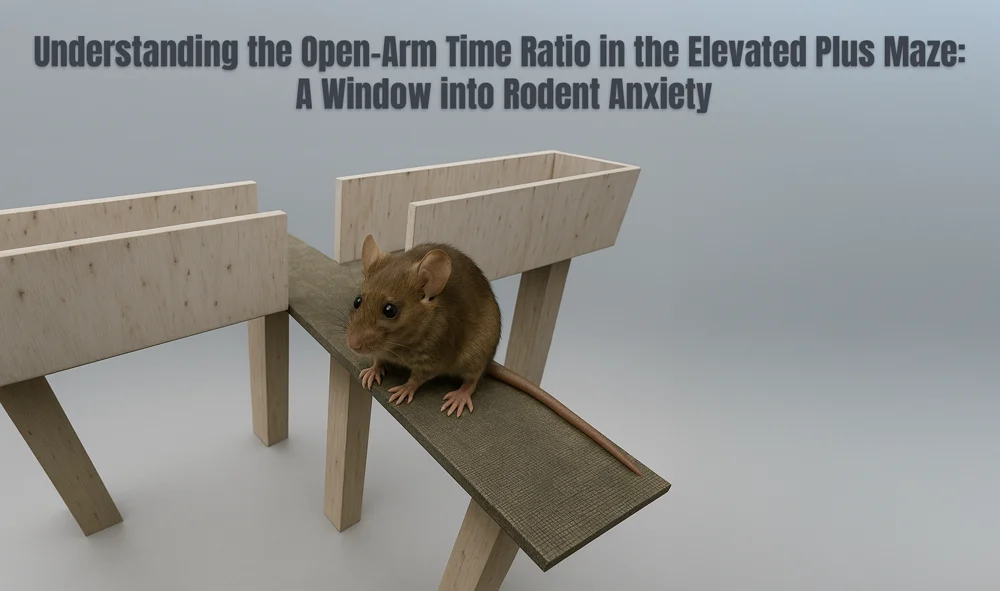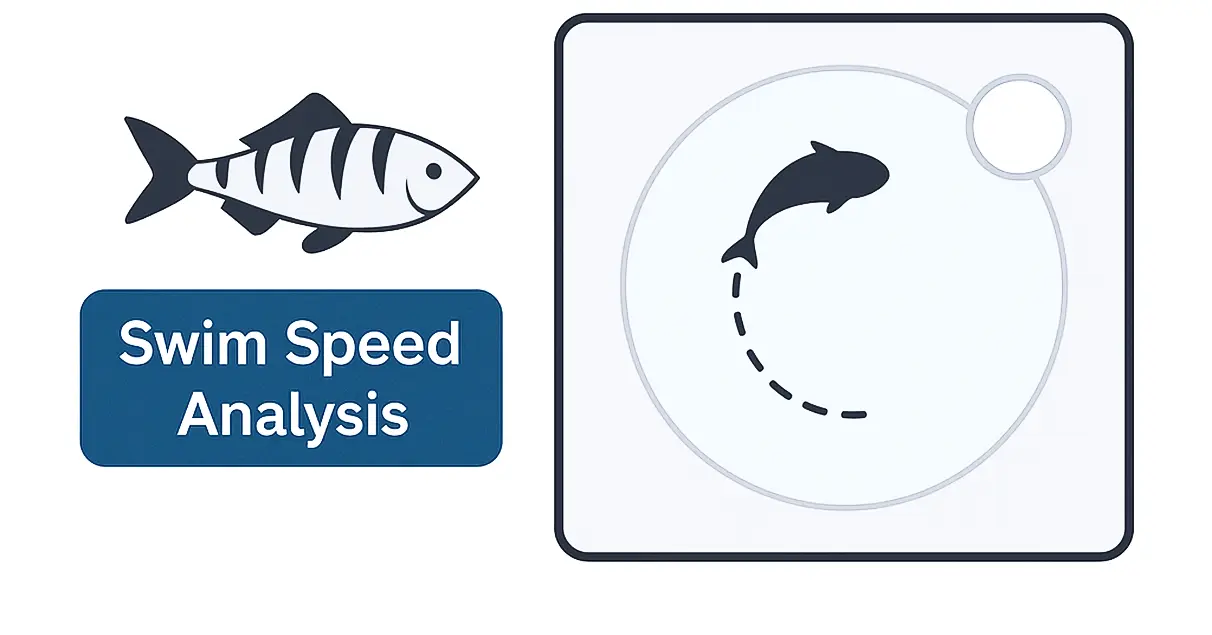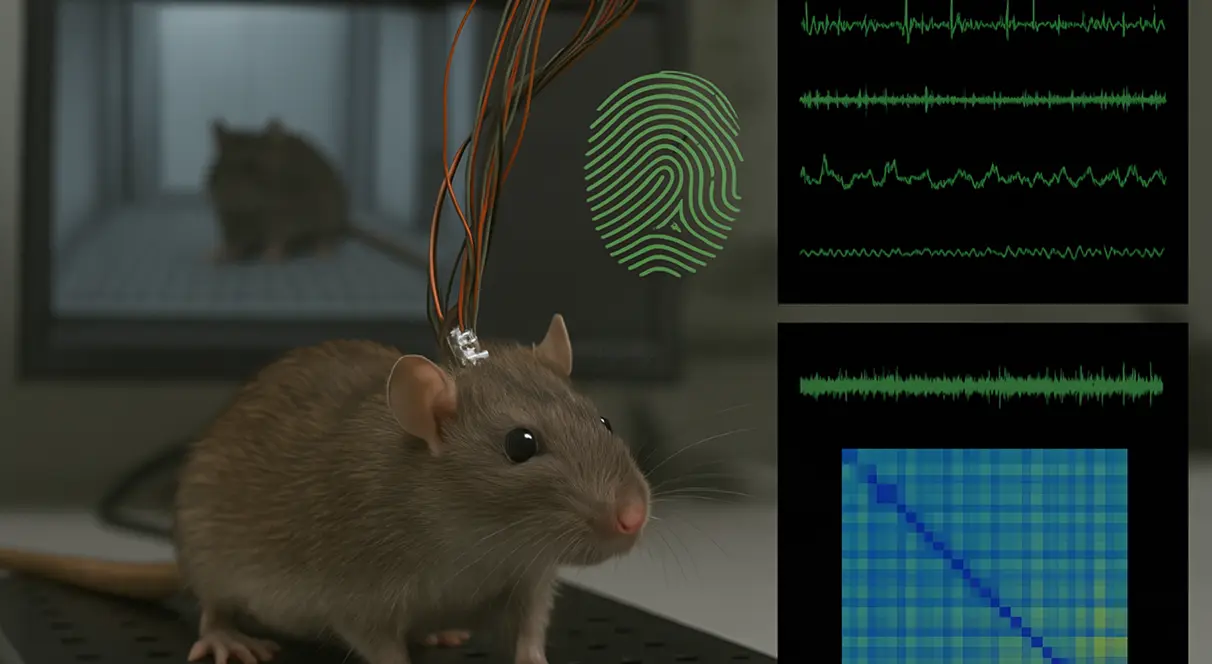

The Elevated Plus Maze (EPM) is a cornerstone behavioral assay for assessing anxiety-like behavior in rodent models. Among its various quantitative outputs, one of the most widely used and informative is the Open-Arm Time Ratio—a behavioral parameter that captures an animal’s willingness to spend time in exposed, aversive environments.
At Conduct Science, we prioritize robust and reproducible methods in behavioral neuroscience. This article delves into the scientific rationale, methodology, and applications of the Open-Arm Time Ratio, offering a comprehensive understanding of its value in preclinical anxiety research.
The Open-Arm Time Ratio is calculated as follows:
Open-Arm Time Ratio=Time Spent in Open ArmsTotal Test Time\text{Open-Arm Time Ratio} = \frac{\text{Time Spent in Open Arms}}{\text{Total Test Time}}Open-Arm Time Ratio=Total Test TimeTime Spent in Open Arms
Where:
The resulting proportion (usually expressed as a percentage) serves as a direct indicator of exploratory behavior under conditions of perceived risk. Higher ratios generally indicate reduced anxiety-like behavior, whereas lower ratios are consistent with avoidance and heightened anxiety.
The EPM capitalizes on rodents’ natural conflict between two competing drives:
This approach-avoidance conflict makes the EPM a powerful assay to detect subtle shifts in anxiety-related behavior. The Open-Arm Time Ratio quantifies how much time an animal resolves this internal conflict in favor of exploration, making it a behavioral readout of risk tolerance.
Unlike discrete measures such as entry counts, time-based measures like this ratio tend to exhibit greater within-subject consistency across repeated trials (File, 1993).
Pharmacological agents like benzodiazepines, SSRIs, and natural anxiolytics reliably increase open-arm time, while stress-inducing manipulations or corticosterone injections reduce it (Pellow et al., 1985; Lister, 1987).
By focusing on time rather than movement, this ratio helps disentangle true anxiety effects from sedation or hyperactivity—an essential distinction when testing drugs.
From BALB/c to C57BL/6 mice, and juvenile to aged rodents, the Open-Arm Time Ratio remains a universally applicable measure, enhancing its utility in comparative and longitudinal studies.
To ensure accuracy and reproducibility, Conduct Science recommends the following procedures:
Maintain consistent total test times (commonly 5 or 10 minutes). Variations can skew the ratio and affect comparability.
Begin and end open-arm timing only when all four paws are fully within the open arm area.
Video-based systems or infrared beam breaks reduce observer bias and enable frame-by-frame analysis of time spent.
Room lighting, odor cues, maze cleanliness, and ambient noise levels can all influence the rodent’s perception of safety. Keep these constant.
Rodent behavior is influenced by circadian rhythms; conduct tests at the same time of day to control for biological fluctuations.
The Open-Arm Time Ratio is a primary endpoint in anxiolytic drug discovery. Increases in this ratio following compound administration are interpreted as indicators of efficacy (Carobrez & Bertoglio, 2005).
Rodents with gene knockouts (e.g., 5-HT1A receptor, BDNF) or transgenic modifications often exhibit altered open-arm behavior, revealing the genetic underpinnings of anxiety (Kalueff et al., 2007).
Models of maternal separation, social isolation, or early trauma consistently report reduced open-arm time ratios, establishing behavioral links to neurodevelopmental disorders (Francis et al., 2002).
Enriched housing conditions or physical exercise have been shown to increase the open-arm time ratio, suggesting a buffering effect against stress-related behavior (van Praag et al., 2000).
Female rodents often show different patterns of open-arm activity, which are modulated by hormonal cycles (Donner & Lowry, 2013). The time ratio can help elucidate these distinctions when analyzed by sex.
While highly valuable, the Open-Arm Time Ratio should not be interpreted in isolation. Researchers should be aware of potential limitations:
Multivariate analysis, incorporating other EPM metrics—like percentage of open-arm entries, head dips, stretch-attend postures, and latency to first open-arm entry—can strengthen the interpretation of this ratio.
The Open-Arm Time Ratio is more than a rodent behavioral metric—it is a proxy for affective state that aligns with human anxiety models. Studies have shown that anxiolytics effective in humans increase open-arm time in rodents, supporting the predictive and construct validity of this parameter.
Moreover, as neuroscience shifts toward precision psychiatry and circuit-specific interventions, time-based metrics offer fine-grained resolution that complements emerging tools like optogenetics and calcium imaging.
The Open-Arm Time Ratio is a powerful, versatile, and scientifically validated metric for studying anxiety-like behavior in rodents. Whether you’re evaluating drug effects, exploring genetic influences, or assessing behavioral outcomes from environmental interventions, this measure offers deep insight into affective and cognitive processing.
At Conduct Science, we are proud to support behavioral neuroscience with rigorously designed mazes, automated tracking systems, and methodological guidance to ensure your research is reproducible, interpretable, and impactful.











Dr Louise Corscadden acts as Conduct Science’s Director of Science and Development and Academic Technology Transfer. Her background is in genetics, microbiology, neuroscience, and climate chemistry.
